MP Board Solutions for Class 9 Geography Chapter 5 – Natural Vegetation and Wildlife
MP Board Solutions for Class 9 Geography Chapter 5 – Natural Vegetation and Wildlife are essential for understanding ecological diversity in the MPBSE curriculum. These well-structured answers help students grasp topics like types of vegetation, forests, endangered species, and wildlife protection. Designed as per the latest syllabus, these solutions strengthen conceptual clarity and improve exam preparation. Ideal for revision and practice, they promote environmental awareness and conservation thinking, making them a valuable study tool for scoring well in Class 9 Social Science exams.
MP Board Solutions For Class 9 Geography – Natural Vegetation and Wildlife – Exercise Images
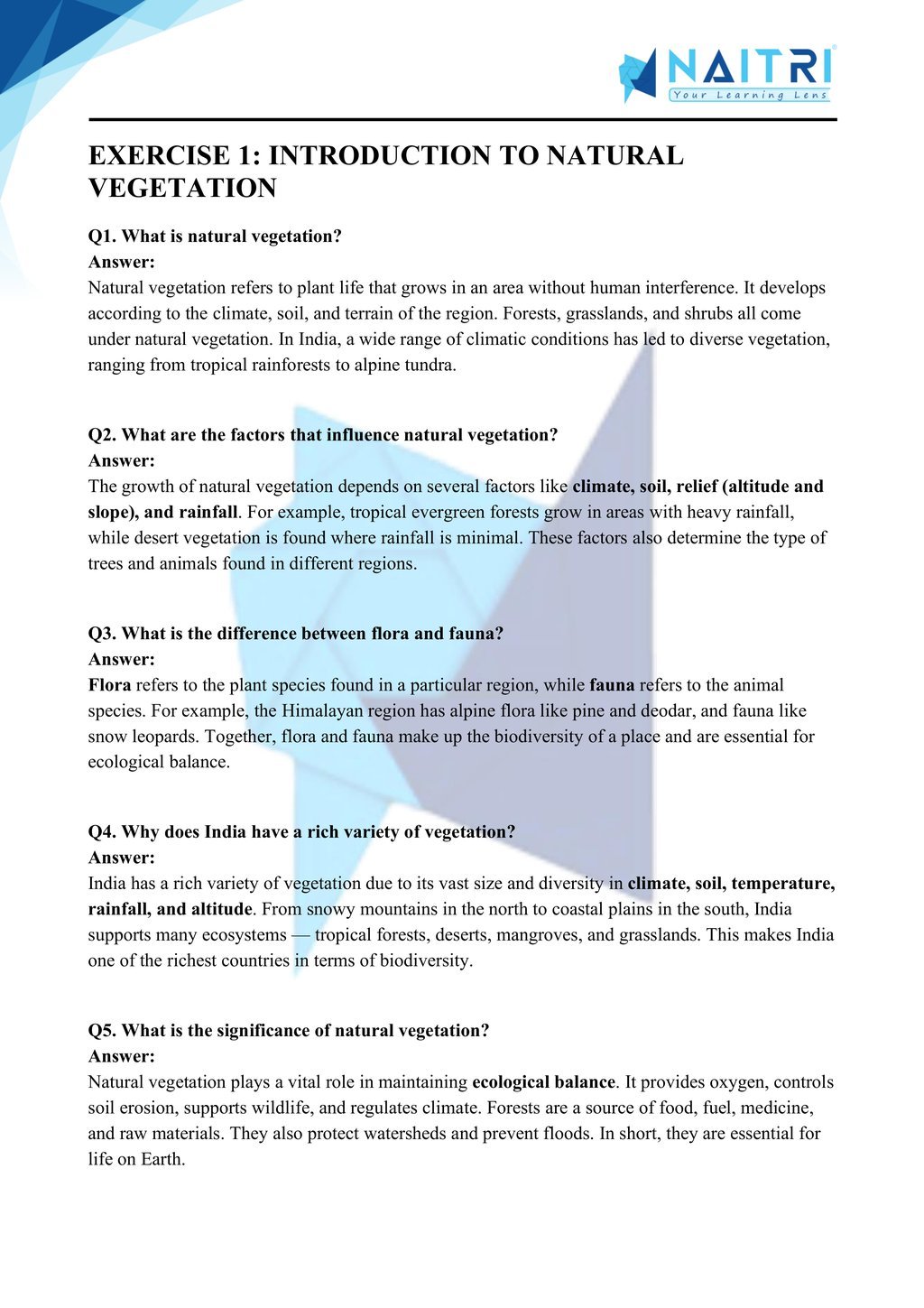
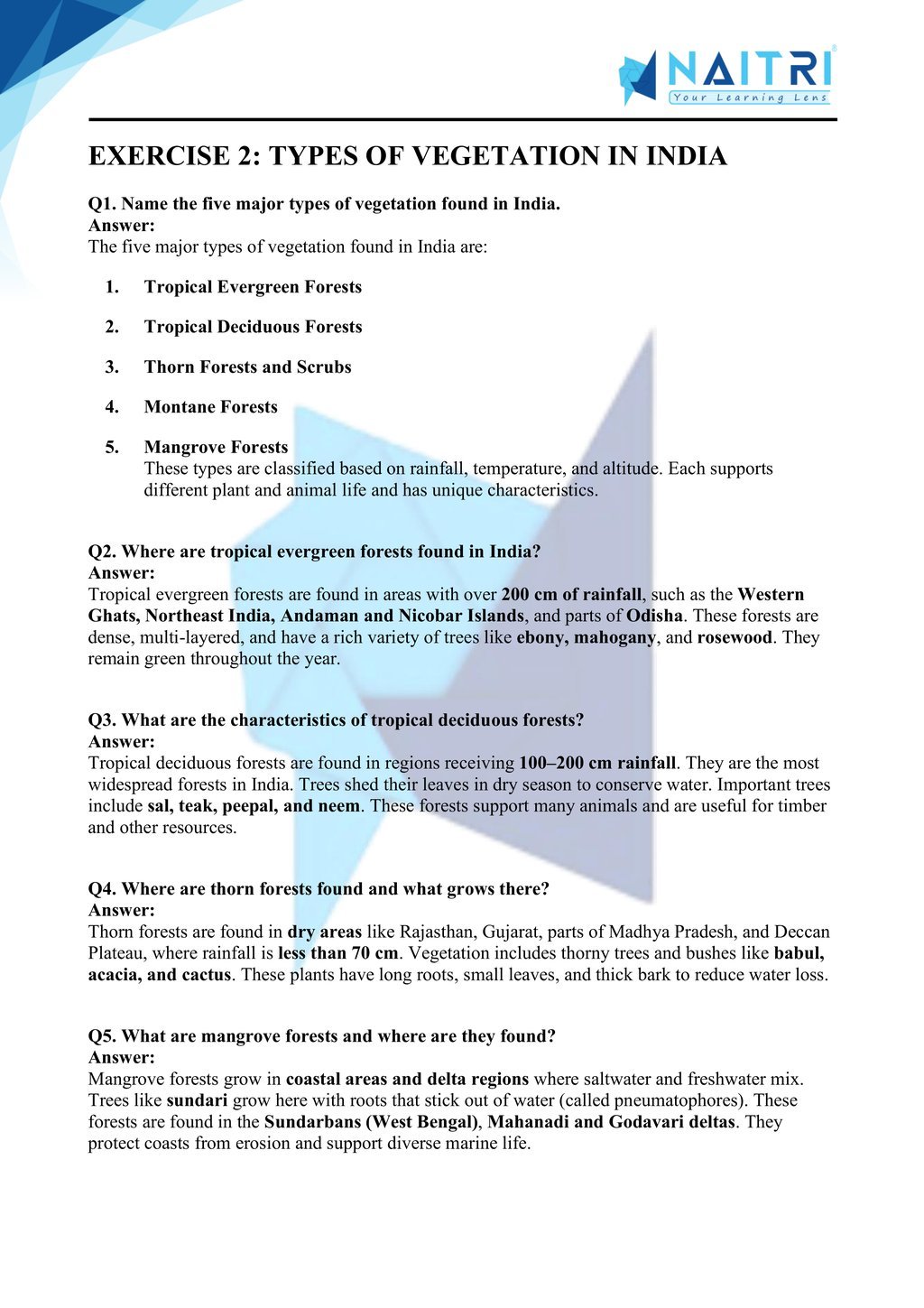
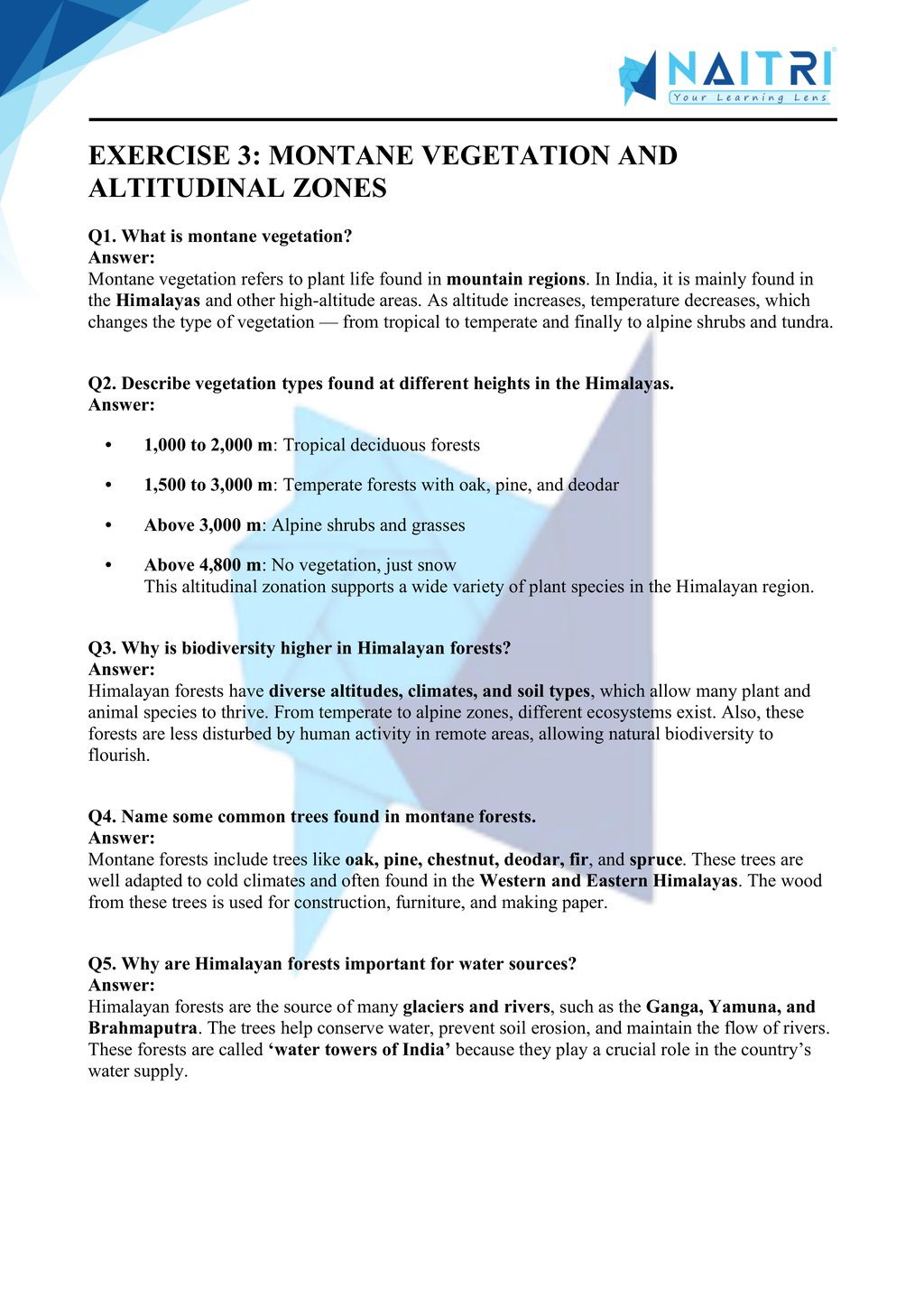
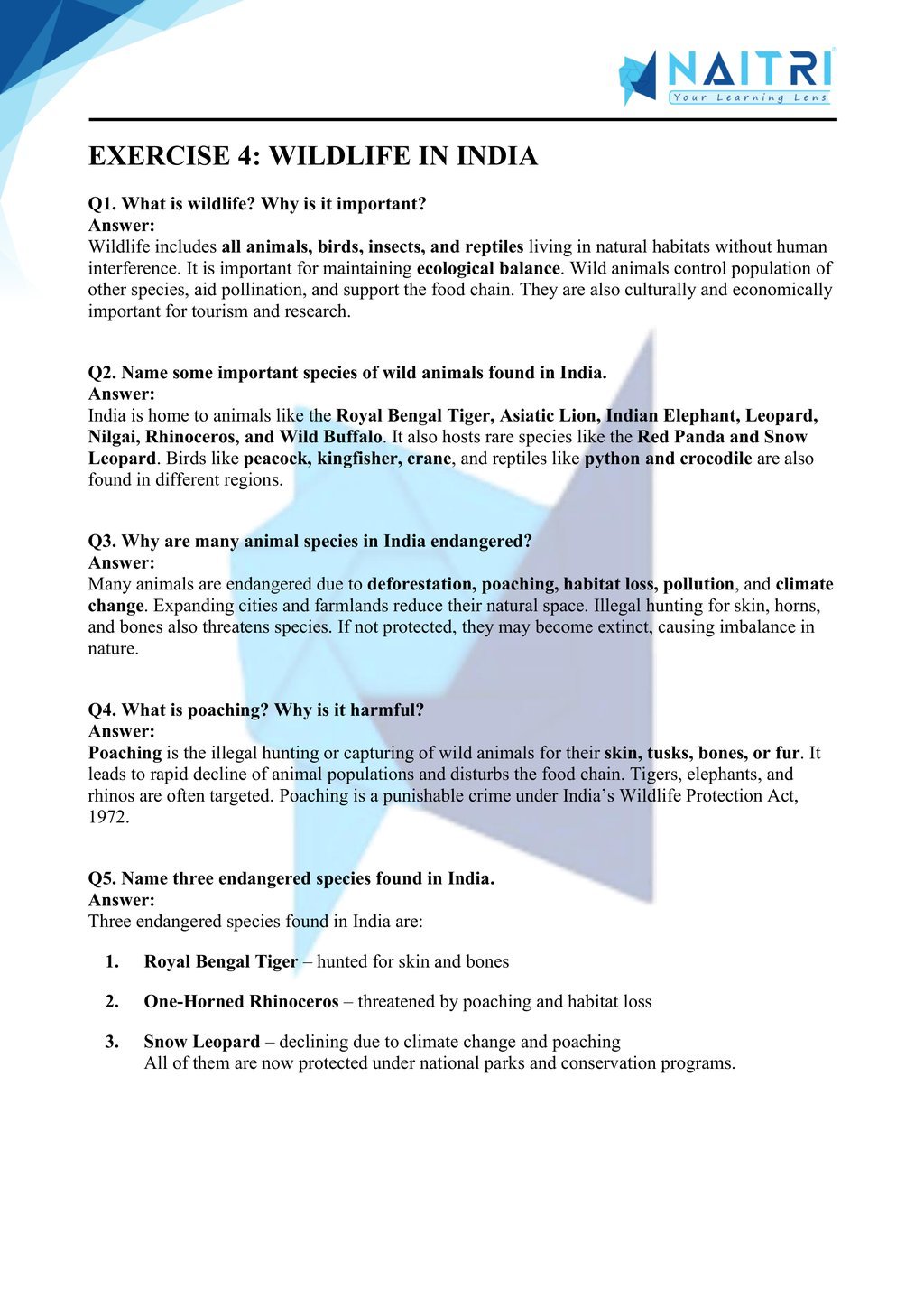
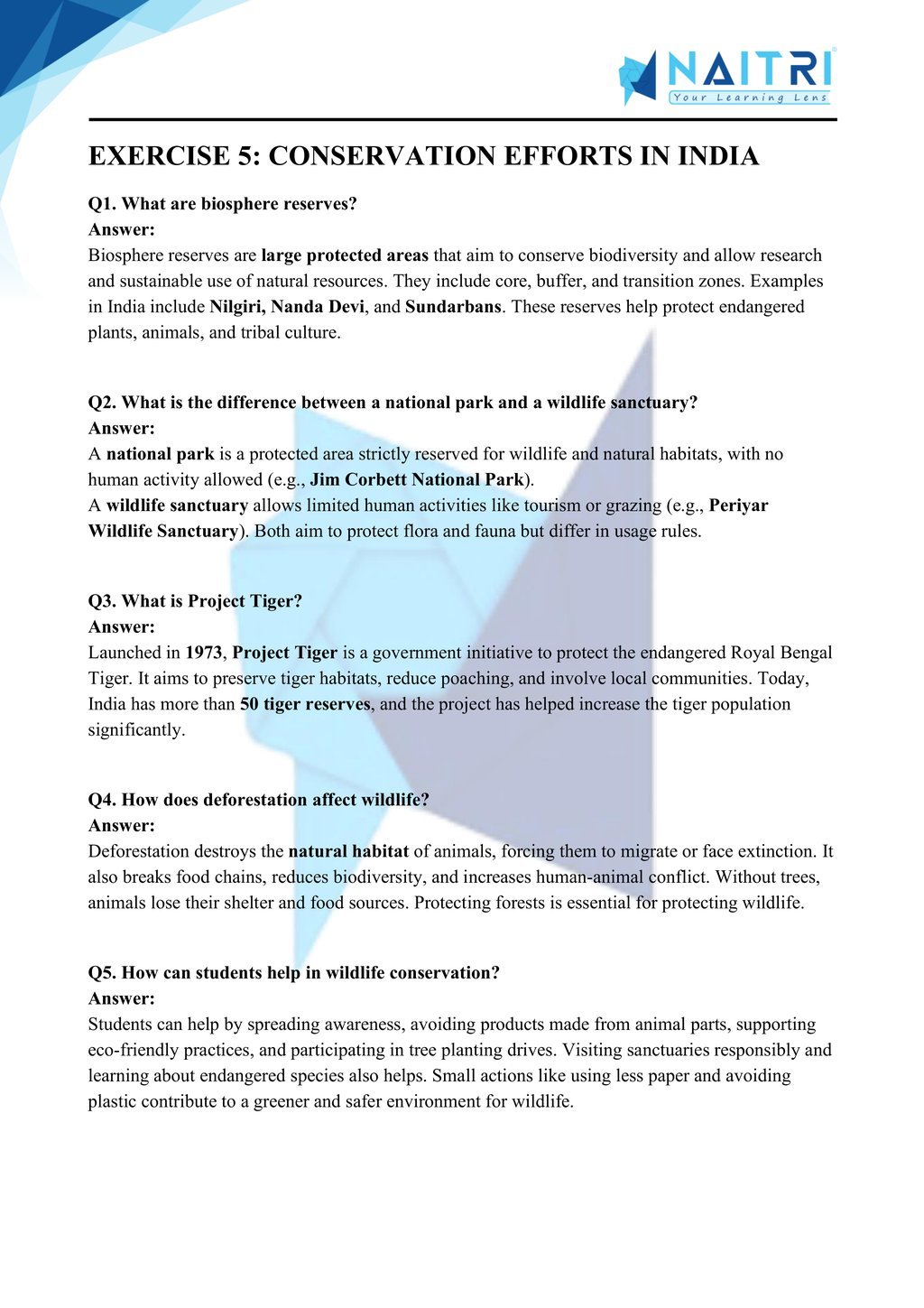
Experience Geography Like Never Before – With AR!
Understanding Natural Vegetation and Wildlife is now more exciting and immersive! With the NAITRI App, you can explore complex geography concepts through Augmented Reality (AR). Explore forests grow, grasslands spread, and animal habitats evolve — right in front of you. Our AR-powered lessons make learning interactive, 3D, and fun, helping you retain concepts better and enjoy every topic.



Visualize . Interact . Understand . The future of learning is here
Natural Vegetation and Wildlife – Important Questions with Answers
1. What is natural vegetation?
Answer: Natural vegetation refers to the plant life that grows in an area without human interference. It includes forests, grasslands, and shrubs that develop naturally based on climate and soil.
2. What factors influence natural vegetation in India?
Answer: Natural vegetation is influenced by climate, temperature, precipitation, soil type, altitude, and slope. These factors determine the type of plants that can grow in a region.
3. Name the five major types of natural vegetation in India.
Answer: The five major types are:
Tropical Evergreen Forests
Tropical Deciduous Forests
Thorn Forests and Scrubs
Montane Forests
Mangrove Forests
4. What are tropical evergreen forests?
Answer: These forests are found in high rainfall areas like the Western Ghats and northeastern states. They remain green throughout the year and have dense, tall trees like ebony and mahogany.
5. Why are tropical evergreen forests difficult to exploit?
Answer: These forests are dense, have thick canopies, and are located in remote, inaccessible areas with heavy rainfall, making logging and transportation difficult.
6. Describe tropical deciduous forests.
Answer: Found in areas with 100–200 cm rainfall, these forests shed their leaves in dry seasons to conserve water. Common trees include teak, sal, and sandalwood. They are ideal for commercial use.
7. Differentiate between moist and dry deciduous forests.
Answer: Moist deciduous forests are found in regions with 100–200 cm rainfall and are denser. Dry deciduous forests occur in areas with 70–100 cm rainfall and have more open canopies.
8. What are thorn forests and where are they found?
Answer: Thorn forests are found in arid regions like Rajasthan and Gujarat. They consist of thorny trees, bushes, and cactus that are adapted to dry climates with very little rainfall.
9. Describe montane forests.
Answer: Montane forests are found in hilly and mountainous regions. Vegetation changes with altitude — tropical forests at the base, temperate forests in the middle, and alpine vegetation at higher altitudes.
10. What are alpine forests?
Answer: Alpine forests are found above 3,600 meters in the Himalayas. Vegetation includes mosses, lichens, and dwarf shrubs. These are adapted to withstand snow and low temperatures.
11. What are mangrove forests?
Answer: Mangroves grow in tidal, swampy coastal areas like the Sundarbans. They are salt-tolerant and have breathing roots called pneumatophores that rise above the water for oxygen intake.
12. Name any two trees found in mangrove forests.
Answer: Common trees include Sundari (which gives the Sundarbans its name) and mangrove palms, both adapted to survive in salty, waterlogged conditions.
13. Why is India rich in biodiversity?
Answer: India’s varied climate, topography, and soil types support diverse ecosystems, making it one of the richest biodiversity zones in the world with numerous plant and animal species.
14. What is the difference between endemic and exotic species?
Answer: Endemic species are native to a particular region (like Nilgiri Tahr), while exotic species are introduced from outside (like eucalyptus) and may or may not adapt well.
15. Why is conservation of forests and wildlife necessary?
Answer: Forests and wildlife provide ecological balance, oxygen, livelihoods, and biodiversity. Conservation helps protect endangered species, prevent soil erosion, and maintain the health of the environment.
16. What are the causes of deforestation in India?
Answer: Causes include agriculture expansion, urbanization, overgrazing, mining, infrastructure development, and illegal logging. These lead to habitat loss and environmental degradation.
17. What steps has the government taken for forest conservation?
Answer: Measures include launching Project Tiger, creating biosphere reserves, national parks, wildlife sanctuaries, afforestation programs, and laws like the Forest Conservation Act.
18. What is a biosphere reserve?
Answer: A biosphere reserve is a protected area meant to conserve biodiversity and promote sustainable development. It includes core, buffer, and transition zones for conservation and research.
19. Name any two biosphere reserves in India.
Answer: Examples include the Sundarbans Biosphere Reserve (West Bengal) and the Nilgiri Biosphere Reserve (Tamil Nadu-Kerala-Karnataka), both rich in unique flora and fauna.
20. What is the role of community in wildlife conservation?
Answer: Local communities protect forests through traditional knowledge, sacred groves, eco-tourism, and joint forest management, ensuring sustainable use and conservation of resources.
21. What is Project Tiger and why was it launched?
Answer: Launched in 1973, Project Tiger aimed to protect the declining tiger population in India. It created tiger reserves and stricter laws to prevent poaching and habitat loss.
22. Mention any two endangered species in India.
Answer: The Asiatic lion and the One-horned rhinoceros are endangered due to habitat loss and poaching. Their survival depends on protected reserves and conservation efforts.
23. What are sacred groves?
Answer: Sacred groves are forest patches preserved by local tribes and communities due to religious beliefs. They serve as natural sanctuaries for rare species and contribute to conservation.
24. How can individuals help in conserving forests and wildlife?
Answer: Individuals can avoid using wood products, plant trees, support eco-friendly brands, reduce pollution, and participate in awareness drives and afforestation efforts.
25. Why is India considered a mega biodiversity country?
Answer: India is home to over 45,000 plant species and 81,000 animal species, spread across forests, grasslands, deserts, and wetlands, making it one of the world’s top biodiversity hotspots.
Natural Vegetation and Wildlife introduces the classification of India’s vegetation into tropical evergreen, deciduous, thorny bushes, mountain forests, and mangroves. It also highlights the country’s rich biodiversity and various species of flora and fauna. The chapter emphasizes conservation efforts, national parks, and biosphere reserves, promoting awareness about protecting India’s ecological balance and endangered wildlife.
Download Naitri App
Easy, Visual Learning — Right on Your Phone
Learn with Augmented Reality! The Naitri app makes CBSE and MP Board concepts interactive and fun — even in low-resource settings. Watch lessons, complete homework, take tests, and track progress — all in one place. Anytime. Anywhere.
Available on








